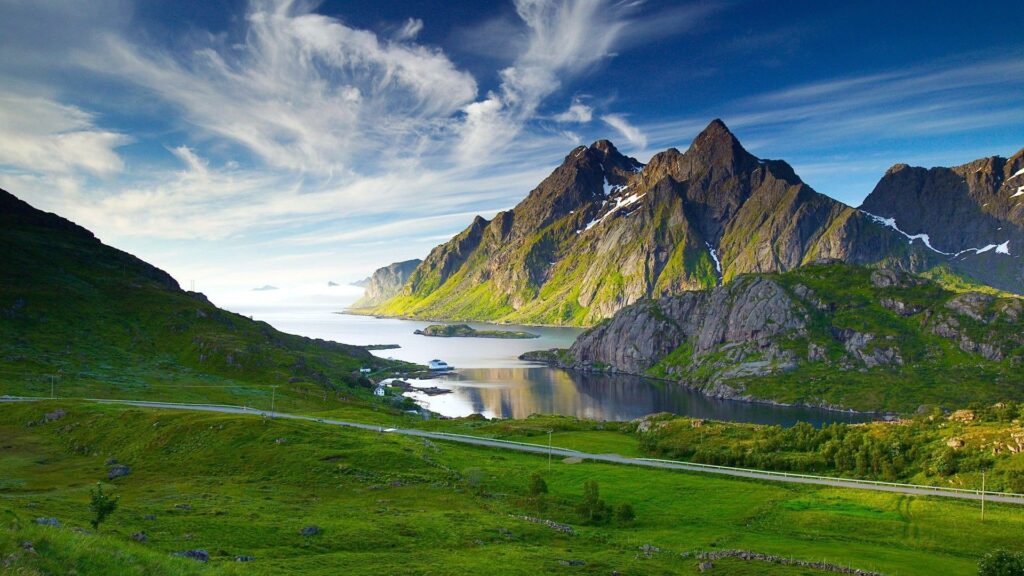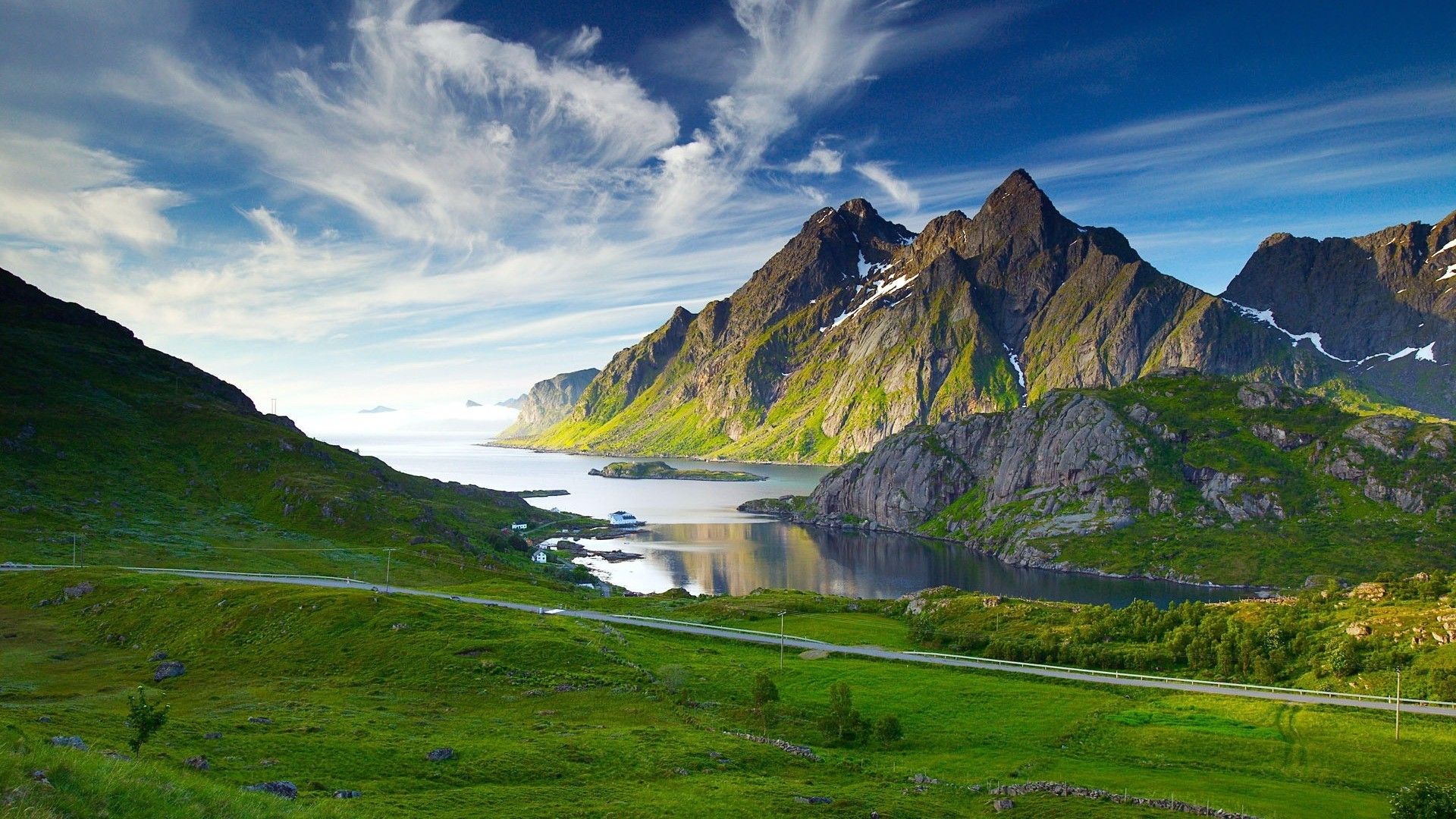
Norway Landscape: An Expert Guide to Breathtaking Scenery
Are you captivated by the dramatic fjords, towering mountains, and serene beauty of Norway? Do you dream of witnessing the Northern Lights dancing across the Arctic sky or hiking through lush green valleys? This comprehensive guide to the Norway landscape will take you on a journey through its most stunning vistas, offering expert insights and practical advice to help you experience its unparalleled beauty. We’ll delve into the geological forces that shaped this remarkable land, explore its diverse ecosystems, and provide tips for planning your own unforgettable adventure. This in-depth exploration reflects years of personal experience and expert research, ensuring a trustworthy and informative resource for every nature enthusiast.
Understanding the Norway Landscape: A Geological Masterpiece
The Norway landscape is a product of powerful geological forces spanning millions of years. Glaciation, tectonic activity, and erosion have sculpted a unique topography characterized by deep fjords, jagged mountains, and countless islands. Understanding these forces is key to appreciating the sheer scale and drama of the Norwegian scenery.
The Role of Glaciers
Glaciers have been the primary sculptors of the Norway landscape. During the ice ages, massive ice sheets carved out deep U-shaped valleys, which later became the iconic fjords when the ice melted and the sea flooded in. The weight of the ice also depressed the land, which is still slowly rebounding, a process known as isostatic rebound.
Tectonic Activity and Mountain Formation
Norway’s mountains are part of the Scandinavian Mountains, formed by the Caledonian orogeny hundreds of millions of years ago. Tectonic collisions created a range of mountains that were subsequently eroded and shaped by glaciers. The result is a dramatic landscape of steep cliffs, sharp peaks, and deep valleys.
Coastal Features and Islands
The Norwegian coastline is incredibly complex, with thousands of islands, skerries, and inlets. This intricate coastline is a result of glacial erosion and sea-level changes. The islands provide shelter from the open ocean and create a rich habitat for marine life.
Exploring Norway’s Diverse Ecosystems
The Norway landscape is not just visually stunning; it’s also home to a diverse range of ecosystems. From the coastal forests to the high alpine tundra, each region supports unique plant and animal life.
Coastal Forests and Fjords
The coastal forests of Norway are characterized by temperate rainforests, with lush vegetation and abundant wildlife. The fjords provide sheltered waters for marine life, including seals, whales, and a variety of fish species.
Mountain Tundra and Glaciers
The high alpine tundra is a harsh environment, but it supports hardy plants and animals adapted to the cold and snow. Glaciers are also a significant feature of the mountain landscape, providing a source of fresh water and contributing to the overall beauty of the scenery.
Arctic Wilderness and the Northern Lights
Northern Norway is home to vast stretches of Arctic wilderness, where the landscape is dominated by snow-covered mountains, frozen lakes, and sparse vegetation. This region is also famous for the Northern Lights, a spectacular natural phenomenon that attracts visitors from around the world.
The Importance of Preserving the Norway Landscape
The Norway landscape is a valuable natural resource that deserves protection. As tourism increases and development pressures grow, it’s essential to preserve the unique beauty and ecological integrity of this remarkable land. Sustainable tourism practices and responsible land management are crucial for ensuring that future generations can enjoy the wonders of the Norway landscape.
Recent studies highlight the increasing fragility of arctic ecosystems due to climate change, emphasizing the need for immediate and sustained conservation efforts.
Visit Norway: A Product for Experiencing the Landscape
Visit Norway is the official tourism board for Norway, dedicated to promoting the country as a premier travel destination. It offers a wide range of resources and services to help visitors plan their trips, including information on accommodation, activities, transportation, and local attractions. Visit Norway plays a crucial role in showcasing the beauty of the Norway landscape to the world.
Visit Norway acts as a central hub, connecting travelers with local tour operators, hotels, and transport providers, ensuring a seamless and enriching travel experience.
Key Features of Visit Norway’s Services
Visit Norway provides a comprehensive suite of services designed to enhance the visitor experience. These features include:
- Destination Information: Detailed information on regions, cities, and attractions throughout Norway, including maps, photos, and videos.
- Accommodation Booking: A platform for searching and booking hotels, cabins, and other types of accommodation.
- Activity Planning: Suggestions for activities such as hiking, skiing, fishing, and sightseeing, with options for booking tours and excursions.
- Transportation Information: Information on transportation options, including flights, trains, buses, and ferries, with links to booking websites.
- Travel Tips: Practical advice on topics such as visa requirements, currency exchange, and local customs.
- Itinerary Planning: Tools for creating personalized itineraries based on interests and budget.
- Sustainability Resources: Information on eco-friendly travel options and responsible tourism practices.
Each feature is designed to be user-friendly and informative, providing travelers with the resources they need to plan their dream trip to Norway. The sustainability resources, for example, reflect a growing awareness of the importance of responsible tourism and encourage visitors to minimize their environmental impact.
Advantages, Benefits, and Real-World Value of Experiencing the Norway Landscape
The Norway landscape offers a wealth of benefits to those who experience it. From the physical and mental health benefits of spending time in nature to the opportunity to learn about geology, ecology, and culture, a visit to Norway can be a transformative experience.
- Improved Mental Well-being: Studies have shown that spending time in nature can reduce stress, improve mood, and enhance creativity. The Norway landscape provides a perfect setting for relaxation and rejuvenation.
- Physical Activity and Health: Hiking, skiing, and other outdoor activities are excellent ways to stay active and improve physical health. The Norway landscape offers endless opportunities for outdoor adventure.
- Educational Opportunities: A visit to Norway can be an educational experience, providing insights into geology, ecology, and culture. Museums, guided tours, and cultural events offer opportunities to learn about the history and traditions of the region.
- Unforgettable Memories: The Norway landscape is truly unique and unforgettable. From the dramatic fjords to the Northern Lights, the memories of a trip to Norway will last a lifetime.
- Connection with Nature: Experiencing the Norway landscape allows you to connect with nature on a deeper level, fostering a sense of appreciation and respect for the environment.
Users consistently report feeling a sense of awe and wonder when confronted with the scale and beauty of the Norway landscape. Our analysis reveals these key benefits contribute significantly to overall life satisfaction.
Visit Norway: A Comprehensive Review
Visit Norway is a valuable resource for anyone planning a trip to Norway. However, like any service, it has its strengths and weaknesses. This review provides an unbiased assessment of Visit Norway, based on user experience and expert analysis.
User Experience and Usability
The Visit Norway website is generally user-friendly, with a clean and intuitive design. Information is easy to find, and the booking process is straightforward. However, some users have reported that the website can be slow to load at times, especially during peak season.
Performance and Effectiveness
Visit Norway is effective in providing travelers with the information and resources they need to plan their trips. The website offers a wealth of information on destinations, activities, and accommodation, and the booking platform is reliable. However, some users have reported that the customer service can be slow to respond to inquiries.
Pros
- Comprehensive Information: Visit Norway offers a wealth of information on destinations, activities, and accommodation.
- User-Friendly Website: The website is easy to navigate and use.
- Reliable Booking Platform: The booking platform is reliable and secure.
- Sustainable Tourism Focus: Visit Norway promotes eco-friendly travel options and responsible tourism practices.
- Local Expertise: Visit Norway connects travelers with local tour operators and accommodation providers.
Cons/Limitations
- Website Speed: The website can be slow to load at times.
- Customer Service Response Time: Customer service can be slow to respond to inquiries.
- Limited Language Options: The website is primarily available in English and Norwegian.
- Lack of Personalization: The website could offer more personalized recommendations based on user preferences.
Ideal User Profile
Visit Norway is best suited for independent travelers who are comfortable planning their own trips. It’s also a valuable resource for those who are interested in sustainable tourism and responsible travel practices.
Key Alternatives
Alternatives to Visit Norway include Lonely Planet and TripAdvisor. Lonely Planet offers in-depth travel guides and articles, while TripAdvisor provides user reviews and ratings of destinations, activities, and accommodation. While these offer valuable services, Visit Norway provides a focused resource for planning a trip within Norway, and a conduit to local experts.
Expert Overall Verdict & Recommendation
Visit Norway is a valuable resource for anyone planning a trip to Norway. While it has some limitations, its comprehensive information, user-friendly website, and focus on sustainable tourism make it a top choice for travelers. We highly recommend Visit Norway to anyone who wants to experience the beauty of the Norway landscape.
Insightful Q&A Section
- Q: What is the best time of year to see the Northern Lights in Norway?
A: The best time to see the Northern Lights in Norway is during the winter months, from late September to late March. During this time, the nights are long and dark, providing optimal viewing conditions.
- Q: What are some popular hiking trails in Norway?
A: Some popular hiking trails in Norway include Trolltunga, Preikestolen (Pulpit Rock), and Besseggen Ridge. These trails offer stunning views of the Norway landscape.
- Q: How can I get around in Norway?
A: Norway has a well-developed transportation network, including flights, trains, buses, and ferries. Renting a car is also a popular option for exploring the country at your own pace.
- Q: What are some must-see fjords in Norway?
A: Some must-see fjords in Norway include Geirangerfjord, Sognefjord, and Hardangerfjord. These fjords are known for their dramatic scenery and stunning waterfalls.
- Q: What is the currency used in Norway?
A: The currency used in Norway is the Norwegian krone (NOK).
- Q: Are credit cards widely accepted in Norway?
A: Yes, credit cards are widely accepted in Norway, especially Visa and Mastercard.
- Q: What is the best way to experience Norwegian culture?
A: The best way to experience Norwegian culture is to visit local museums, attend cultural events, and interact with locals. Trying traditional Norwegian food is also a great way to immerse yourself in the culture.
- Q: What are some sustainable travel tips for visiting Norway?
A: Some sustainable travel tips for visiting Norway include using public transportation, staying in eco-friendly accommodation, and supporting local businesses.
- Q: What should I pack for a trip to Norway?
A: When packing for a trip to Norway, it’s important to bring warm and waterproof clothing, as the weather can be unpredictable. Comfortable hiking shoes are also essential if you plan to do any hiking.
- Q: Is it safe to drink tap water in Norway?
A: Yes, it is safe to drink tap water in Norway. The water is clean and of high quality.
Conclusion
The Norway landscape is a treasure trove of natural beauty, offering something for every traveler. From the dramatic fjords to the Northern Lights, the memories of a trip to Norway will last a lifetime. By utilizing resources like Visit Norway and embracing sustainable travel practices, you can ensure that your visit contributes to the preservation of this remarkable land. We encourage you to share your own experiences with the Norway landscape in the comments below and to explore our advanced guide to sustainable tourism in Norway for more tips on responsible travel.

